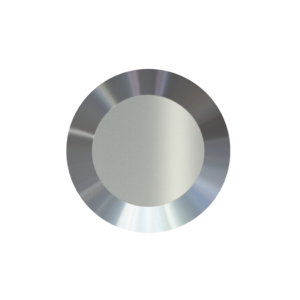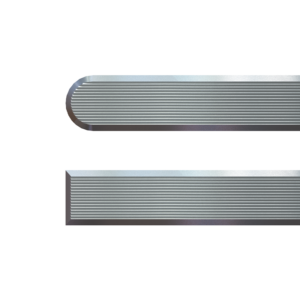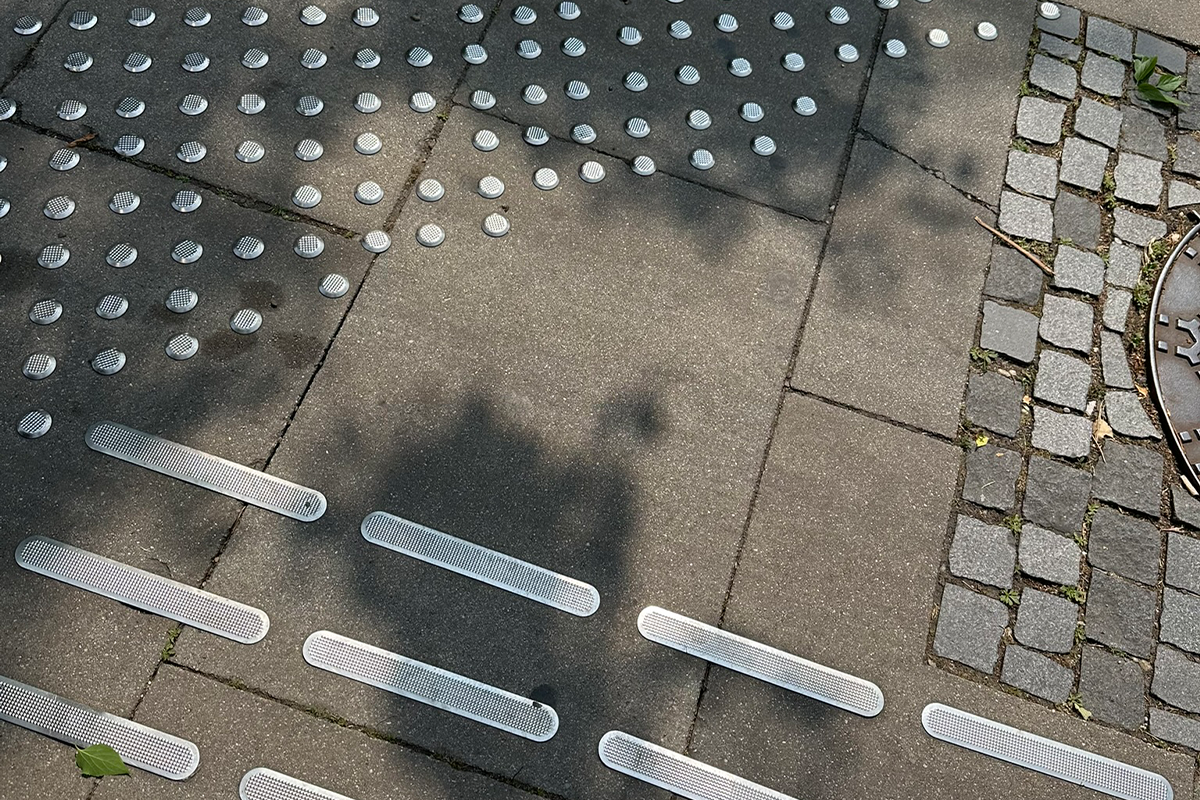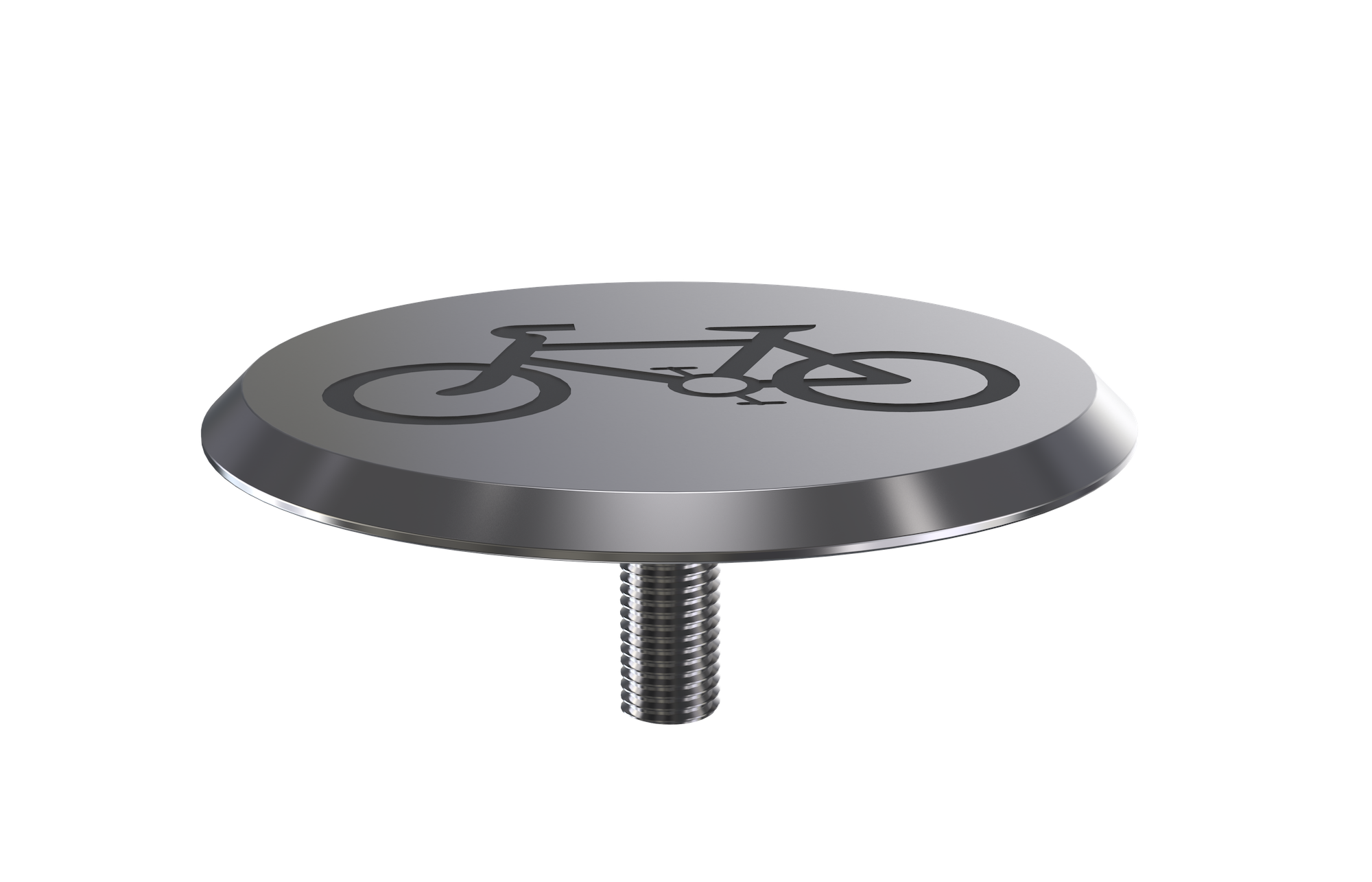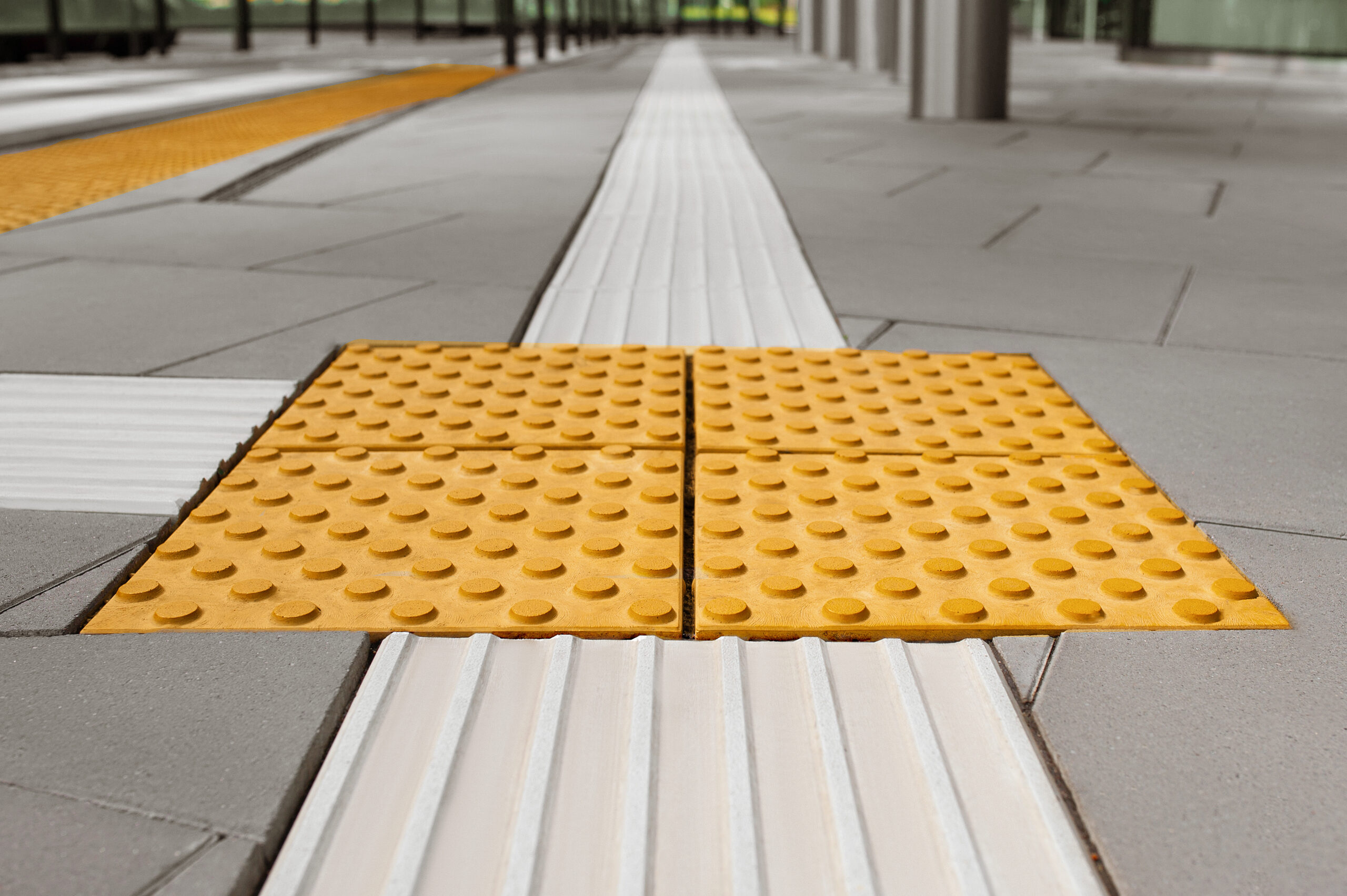Using Tactile Paving and Studs to Encourage Inclusive Mobility
Blog
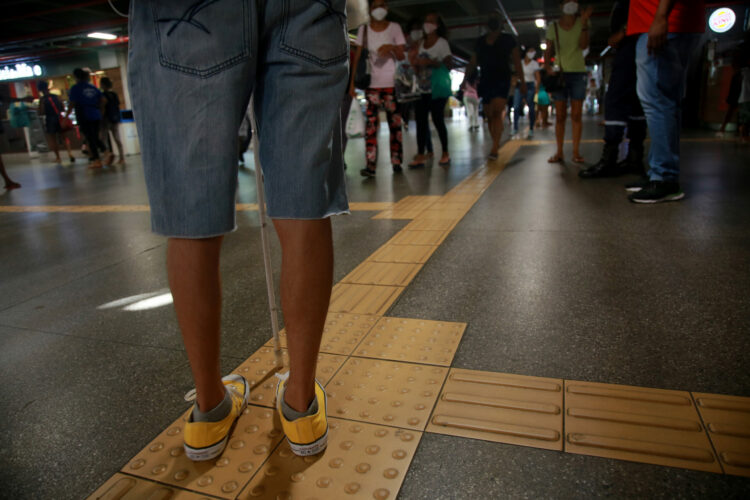

Inclusive mobility with tactile indicators
Over 2 million people are living with sight loss in the UK, with 340,000 registered blind or partially sighted. That’s why thinking about inclusive mobility is so important when it comes to the development of new public spaces, buildings, and transport networks. Inclusive built environments make getting out and about independently more achievable.
So how do tactile paving and studs play a part in inclusive architecture? Simply put, tactile paving and studs remove various barriers for the visually impaired by providing a readable streetscape. These cues provide information about several different hazards, such as kerb drops, cycle lane locations, crossing points, and anything else that may impede their travel.
Without tactile paving and studs, those faced with visual impairments are stepping into the unknown. Navigating streets is much slower and more hazardous, creating an unwelcoming and often unsafe environment.
In both new and existing developments, city planners, architects and business owners should consider inclusive mobility as a necessity and not just a nice-to-have feature.
In this article, we will discuss in more detail the different types of tactile paving surfaces available, and explore the subtle yet vital messages they can be used to communicate to effectively encourage inclusive mobility.
What is Tactile Paving?
Whether they know it or not, everybody has come across tactile paving; those little bumps on the pavement that often go unnoticed by those who aren’t visually impaired.
Tactile paving is raised textured surfaces that balance providing physical feedback for the visually impaired with remaining unobtrusive. They’re made from a variety of materials such as concrete, GRP and TPU, and come in two main colours, namely buff and red. There are six main types of tactile paving surfaces in use throughout the UK, each with a key purpose.
The Department for Transport has issued detailed guidance on tactile paving to maintain consistency and minimise confusion for impaired pedestrians in new environments. It’s essential that city planners, architects and business owners read and follow this guidance closely when working on a new infrastructure or building project.
What are the Different Types of Tactile Paving?
As previously mentioned, tactile paving is a little-known language for the majority of the population, but for low-sighted and blind individuals tactile paving is a much-needed lifeline.
Tactile paving and studs come in all sorts of shapes and sizes, each type with a specific purpose and message.
Blister Paving: Also known as a blister surface, this is the bobbled paving used to indicate a pedestrian crossing.
Offset Blister Paving: With raised bumps that are staggered rather than linear, offset blister paving is primarily used to indicate railway platform edges inside a station.
Hazard Paving: With rounded raised bars, corduroy hazard paving alerts visually impaired pedestrians of the presence of steps and railway level crossings.
Lozenge Paving: With oblong flat-topped bumps, lozenge paving indicates the edge of an on-road platform such as a tramway or light railway.
Cycleway Paving: On a shared cycleway and footpath, flat-topped bars indicate which side is for pedestrians. A raised delineator strip in the centre also helps pedestrians stay on the correct side.
By feeling the raised bumps under foot or with a cane, the visually impaired population can better understand their surroundings and avoid obstacles or hazards. Incorporating tactile floor surfaces improves confidence and quality of life, as well as reducing the risk of accidents or injuries.
Guidance Paving: Paving with flat-topped bars and rounded edges is used to guide visually impaired pedestrians through open areas and away from obstacles.
Sometimes, tactile paving is not possible or appropriate but that doesn’t mean inclusivity should be forgotten. Demarcation studs and tactile strips can be used to mark out walkways and hazards instead of paving. Demarcation studs and tactile strips are crafted in a range of different materials and colours. Often used inside public buildings such as banks, schools, and train stations, their presence gives further freedom for the visually impaired community to go about their daily life.
Studs and strips can be retrofitted to existing buildings and surfaces, encouraging inclusive mobility without costly replacements. With a sleek low profile and anti-slip finish, tactile studs are a versatile option for encouraging inclusive mobility without impacting design.
How to Use Tactile Paving and Studs Effectively
Going above and beyond the government guidance on tactile paving is the best way to encourage inclusive mobility. When planning a new building or pathway, think about accessibility at every turn, and try to communicate with the end user to solve potential issues with forethought and planning.
What is Consistency in Tactile Paving?
Consistency is key when it comes to tactile paving and studs. Mixed messages can discourage inclusive mobility and lead to confusion, accidents, and a reluctance to try again. The Department for Transport has released guidance on how tactile paving should be implemented but there are still many inconsistencies throughout interior and exterior spaces.
Consistency means always adhering to the correct type of tactile paving for the situation and the appropriate colour (more on that below). When it comes to measurements and depths is a must – tactile surfaces should be appropriately spaced to give pedestrians a chance to react in time.
Despite guidance, colour and maintenance commonly fall under par and it is important to look at the reasons why.
Colour
The UK guidance on tactile paving was influenced by a campaign launched by RNIB. It was apparent that boroughs in London and councils outside of the city were placing more importance on aesthetics. The colour of tactile paving was shifting to darker greys, making it much harder for visually impaired people to define, creating situations where they could walk out into the road.
Today, one of the key requirements in the UK government’s guidance on tactile paving, is that a contrast in colour to the surrounding surface (usually buff or red) is provided. On occasion, there are exceptions to the rule, for example, when the surrounding surface is also buff and better definition is needed.
However, one colour that is not up for substitution is red, which is used only for controlled crossings. According to government guidance, blister tactile paving at a controlled crossing (where a signal stops traffic for pedestrians to cross) must be red. Meanwhile, uncontrolled crossings – where traffic gives way to pedestrians (such as zebra crossings) – should feature blister paving in any other colour than red.
While up to date guidance on tactile paving will help to achieve consistency moving forward, there is still a legacy of poorly distinguished tactile surfaces that is yet to be rectified.
Maintenance
To ensure the safety of all pedestrians, tactile paving must be properly maintained. UK guidance states that tactile paving and studs should be replaced once the raised sections have been worn down below 3 mm in height.
While guidance exists on when tactile paving should be replaced, there is little direction on how maintenance should be monitored and implemented. When tactile paving isn’t properly maintained and the bumps or ridges degrade. Degraded bumps and ridges make it difficult to tell where the pavement finishes and the road starts. Equally, tactile paving that is cracked or broken is a trip hazard, contributing barriers to accessibility.
To make maintenance easier, city planners, architects and business owners should choose a durable material for tactile paving and try to specify solutions that can be easily replaced when needed.
Need help choosing the right tactile paving, studs or strips for your project? Speak to the team today by calling 01686 807 450 or email [email protected].

